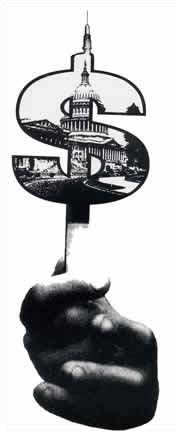By wakeupmag.co.uk
“No one knows what is really going on. If they ever did, it would make Watergate look like Alice in Wonderland.” — LESTER COLEMAN, ex U.S. Defence Intelligence Agency
“It is ironic, to say the least, that America’s heroin plague is of its own making.” — FRED W. McCOY
INTRODUCTION
Under the guises of national security, patriotism and protecting democracy, normal boundaries of ethics and morality have been consistently transcended by the Central Intelligence Agency in its ideological war of defeating communism. The Agency has resorted to any means it considers necessary, and allied itself with any person or group it considers necessary, to help it achieve its ends. As ex-CIA agent Victor Marchetti put it: “The Agency would hire Satan himself as an agent if he could help guarantee the national security.”
The United States government has willingly made drug networks an essential ally in the covert expansion of American influence abroad. Despite the government’s supposedly vociferous anti-drugs policy, senior U.S. diplomats and CIA agents have actively engaged in the production and transport of narcotics worldwide. The CIA’s enormous role in the global drugs trade provides one of the murkier narratives of the Agency’s sordid history. As will be shown, the trail of corruption leads to the highest levels of successive Washington administrations, right to the front doors of Presidents Nixon, Carter, Reagan, Bush and Clinton.
The CIA has also brought its methodology home to the inner city ghettos in the United States, victimising American citizens as badly as any foreigners. In fact, at two critical junctures after World War II – the late 1940s and the late 1970s – when America’s heroin supply and addict population began to ebb, the CIA’s covert narcotics operations generated a sudden surge of heroin that soon revived the U.S. drug trade….
Intelligence agencies and crime syndicates share much in common; both maintain large organisations capable of carrying out covert operations without fear of detection and there has developed a natural affinity between the two. For example, when the CIA needed a legion of thugs to break the 1950 Communist dock strike in Marseilles, it turned to the city’s Corsican crime gangs. When the Agency attempted to assassinate Fidel Castro in the 1960s, it employed American Mafia syndicates.
The CIA’s involvement with the international drugs trade can be traced back to the Agency’s covert operations in the Far East, Latin America and Europe in the early stages of the Cold War. CIA operatives directly assisted underworld narcotics traffickers in these areas, aligning together in a fight against Communism and the left. The CIA has allied itself with heroin merchants in Laos, Chinese opium dealers in Burma, military drug lords in Thailand and Panama, Colombian cocaine cartels in Nicaragua and Costa Rica, and guerrilla opium armies in Afghanistan….
THE EUROPEAN CONNECTION
The CIA’s alliance with the drug lords in the late 1940s came at a time when the global opium trade was at its lowest ebb in nearly two centuries. World War II had disrupted international shipping and imposed tight waterfront security that made smuggling of heroin into the United States virtually impossible. Heroin supplies were small and international crime syndicates were in disarray. America’s addict population plummeted from 200,000 in 1924 to a mere 20,000 in 1945. The possibility existed that heroin addiction might eventually disappear as a major social problem in the United States. However, the CIA and its wartime predecessor, the OSS (Office of Strategic Studies), created a situation that made it possible for the Sicilian-American Mafia and the Corsican underworld to revive the international narcotics traffic.
Europe was America’s most important political battleground at that time. Determined to restrict the influence of the left in Western Europe, the CIA intervened covertly in the internal politics of Italy and France. In Sicily the OSS allied with the Mafia to assist the Allied forces in their 1943 invasion of the island. After taking control of Sicily, the U.S. army returned favours to the Mafia by appointing Don Calogero Vizzini (the leader of the Sicilian Mafia) mayor of Villalba. Genco Russo (Calogero’s successor as Sicily’s Mafia boss) was appointed mayor of Mussumeli. Under the command of Colonel Charles Poletti, the former lieutenant governor of New York, the Allied Military Government selected Mafiosi as mayors in many towns across western Sicily. Within five years the, Mafia controlled politics in Sicily. As Italian politics drifted to the left in 1943-1944, the alliance between American intelligence and the Mafia was maintained to check the growing strength of the Italian Communist Party in Sicily, Don Calogero rendered services to Washington’s anti-Communist efforts by breaking up left-wing political rallies. On September 16th 1944, for example, a Communist rally ended abruptly in a hail of gunfire as Don Calogero’s men fired into the crowd and wounded 19 spectators.
In 1946, American military intelligence made an enormous gift to the. Mafia – they released Salvatore “Lucky” Luciano from prison in New York and deported him to Italy, thereby freeing one of the criminal talents of his generation to rebuild the heroin trade. Luciano was the man who had, almost single-handedly, built the Mafia into the most powerful criminal syndicate in the United States. Within two years after Luciano’s return to Italy, the U.S. government deported more than 100 more Mafiosi.
With the help of these people and his old friend Don Calogero, Luciano was able to quickly build an international narcotics syndicate. For more than a decade, this syndicate moved morphine base from the Middle East to Europe, transformed it into heroin, and then exported it in substantial quantities to the United States – all without suffering a major arrest or seizure. The organisation’s comprehensive distribution network within the United States helped raise the number of addicts from an estimated 20,000 at the close of World War II to 60,000 in 1952 and to 150,000 by 1965. Luciano became a millionaire many times over.
 Mafia leader Charles “Lucky” Luciano (standing, right),
Mafia leader Charles “Lucky” Luciano (standing, right),after his deportation to Italy by the U.S.
From 1948 to 1950, the CIA allied itself with the Corsican underworld in its fight against the French Communist Party (then the largest political party in France) for control over the strategic Mediterranean port of Marseilles. At this time the Sicilian Mafia were relying on Marseilles’ Corsican syndicates for their drug supplies.
The Corsican syndicates gained political power and control of the waterfront as a result of their involvement with the CIA in strike-breaking activities: in early November 1947, a series of wildcat strikes and demonstrations broke out in Marseilles over poor wages and skyrocketing food prices, which were leading to widespread starvation. Spontaneous strikes closed down factories, mines and railway yards throughout the country and by late November, three million workers were on strike and the French economy was almost paralysed.
Working through the American Federation of Labor (AFL), which was operating its own secret networks throughout Europe, the CIA began sending some $2 million a year to anti-Communist labour leaders and engineered the first split in post-war European labour by channeling clandestine funds to the Socialist leader Leon Johaux, who then led his anti-Communist union, Force Ouvrriere, out of an alliance with the Communists.
It may seem out of character for the CIA to be backing anything so far left as the Socialist Party. However, at the time there were only three major political parties in France – Socialist, Communist and Gaullist. While General de Gaulle was too independent for Washington’s tastes, Socialist leaders were rapidly losing political ground to the Communists and thus were willing to collaborate with the CIA. Agency payments of $1 million to the Socialist Party guaranteed them a strong electoral base in the labour movement and gave its leaders the political strength to lead the attack on strikers.
While Marseilles Socialist leader Gastron Defferre called for an anti-Communist crusade from the floor of the National Assembly, Socialist Minister of the Interior Jules Moch directed massive police actions against striking workers. With the advice and support of the U.S. military attaché in Paris, Moch called-up 80,000 reserves and mobilised 200,000 troops to battle the strikers. Police units attacked picket lines with unrestrained violence, while Communist municipal councilors were severely beaten up in Marseilles City Hall by members of the Mafia gang led by the Guerini brothers.
The CIA also sent agents and a psychological warfare team to Marseilles, where they dealt directly with Corsican syndicate leaders through the Guerini brothers. The Agency supplied arms and money to the Corsican gangs for harassment of union officials and assaults on Communist picket lines, murdering a number of strikers in the process. The CIA psychological warfare team prepared pamphlets, radio broadcasts and posters aimed at discouraging workers from continuing the strike. At one point the American government threatened to ship 65,000 sacks of flour meant for the hungry city back to the U.S. unless the dockers unloaded them immediately. Faced with the overwhelming onslaught of violence and hunger, Marseilles’s workers abandoned the strike after less than a month, along with their comrades in the rest of France. The Guerinis gained enough power and status from their role in smashing the strike to emerge as the new leaders of the Corsican underworld in Marseilles.
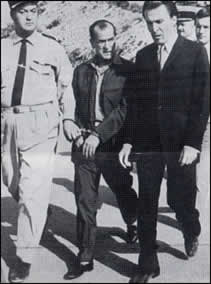 Barthelemy Guerini, the Marseilles Mafia leader who fought the Communist Party with the support of the CIA. He was sentenced to twenty years for a milieu murder in 1970.
Barthelemy Guerini, the Marseilles Mafia leader who fought the Communist Party with the support of the CIA. He was sentenced to twenty years for a milieu murder in 1970.
When more strikes broke out in Marseilles in 1950, the CIA channeled £2 million of covert funds to scab labourers from Italy and a crew of local Corsican criminals led by Pierre Ferri-Pisani to work the docks, unloading shipments of U.S. weapons. In addition, the Guerini’s gangsters were assigned the job of assaulting Communist pickets to allow troops and scabs onto the docks.
By supplying the Corsican syndicates with money and support, the CIA broke the last barrier to unrestricted Corsican heroin smuggling operations in Marseilles. The Corsicans used their control over the port to turn it into the heroin capital of Europe and to dominate the export of heroin to the U.S. market. Gaston Defferre and the Socialist Party emerged victorious following the weakening of the Communist Party and the Socialists maintained a political reign over the Marseilles municipal government that lasted a quarter of a century.
Throughout this period, the Guerinis maintained a close relationship with the party, acting as bodyguards and campaign workers for Socialist candidates. The Corsicans also enjoyed political protection from France’s intelligence service, the SDECE, which allowed their heroin laboratories to operate undisturbed for nearly 20 years.
THE SOUTHEAST ASIAN CONNECTION
Simultaneously to its activities in Europe, the CIA ran a series of covert operations in Southeast Asia along the Chinese border, which was instrumental in the creation of the “Golden Triangle” heroin complex.
The outbreak of the Korean War in 1950 established the CIA’s jurisdiction in the Far East and for the next quarter century covert paramilitary operations were the major Agency activity in the area. Since these demanded alliances with powerful warlords or tribal leaders who traditionally dealt in drugs, the Agency enmeshed its covert operations with the region’s opium traffic.
When Mao Tse-tung’s peasant armies captured Shanghai after World War II, they drove China’s heroin traffickers out of the country. The new Communist regime then began a massive detoxification programme to combat its addict population, estimated at 40 million, the largest in the world. Communist cadres identified addicts and sent them to local drug clinics; persistent addicts were dispatched to labour camps. Through the process of land reform, extensive poppy fields were reclaimed for food production and further opium cultivation was banned. The People’s Liberation Army began patrolling the Chinese border to prevent an expected counter-attack by CIA-supported Nationalist Chinese troops and China’s drug trade virtually ceased.
In contrast to such anti-drug activities by the Communists, the CIA and the U.S. Agency for International Development (USAID) supplied the region’s opium and heroin dealers with arms, ammunition, transportation of food supplies, buildings and “humanitarian aid”, in exchange for mercenary forces or political leverage. These dealers included the Kuomintang (KMT or Nationalist Chinese) on the Chinese border, Hmong tribesmen in Laos led by narcotics trafficker Vang Pao, and various political factions in South Vietnam and Burma.
Opium trafficker General Vang Pao, commander of the
CIA’s Secret Army in Laos from 1960 to 1975.
CIA support often included active participation in the collection, manufacture and transport of opium and heroin. CIA activities in Burma helped transform the Shan States from a relatively minor poppy-cultivating area into the largest opium-growing region in the world, while the CIA helped install a 12,000-strong opium army in the mountains of northern Burma.
As part of its covert operations against Communist China, the CIA established a large cover structure on Taiwan known as Western Enterprises. This, and one of the Agency’s airlines, Civil Air Transport, provided cover for the CIA to drop teams of Chinese Nationalist soldiers on mainland China, to contact dissidents and build a viable resistance to Mao Tse-tung’s government. Commandos were also sent in via small boats from the offshore island of Quemoy.
The CIA planned a covert invasion of China, and organized several thousand troops led by General Li Mi, who were joined by a further 8,000 recruits from the indigenous hill tribes in Burma and 1,000 crack KMT troops shipped in by the Agency from Taiwan. The CIA’s airlines began regular shuttle flights to bases and camps in Burma, using Thai airstrips for refueling and re-supplying.
In August 1952, this army invaded Yunnan Province in China, predicting that the peasants would rise up in support of them. But this did not happen and the invaders were driven out. General Li Mi gave up attempts to defeat China, established a quasi-independent state in Burma and became involved in running the lucrative opium trade, aided in this by General Phao Siyanan of the Thai Police, one of the CIA’s most important agents in Southeast Asia.
Over the next decade, Burma’s Shan states were transformed into the world’s largest opium producer. The CIA’s alliance with the opium armies in the Burma-Thai borderlands lasted for a decade. The Agency delivered arms to their forces in Burma and then loaded opium aboard Civil Air Transport planes for the return flight to Bangkok. Infiltration routes for CIA commando teams into Southern China were also used as drug smuggling routes for traffickers in Burma and Thailand. The Agency maintained five secret training camps and two key listening posts in the Shan states, protected by drug smuggling KMT troops and local tribesmen.
The rationale behind the CIA’s support for drug traffickers in the region was best summed up by General Tuan Shi-wen, a veteran of the Agency’s covert war in Burma: ‘We have to continue to fight the evil of Communism and to fight you must have an army, and an army must have guns, and to buy guns you must have money. In these mountains, the only money is opium.”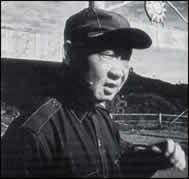
The CIA, via its Sea Supply Company, threw its full support behind General Phao, making him the strongest man in Thailand. In exchange, Phao allowed the Agency to develop two Thai paramilitary organisations, the Police Aerial Reconnaissance Unit and the Border Patrol Police (BPP). To manage the training and equipping of the BPP, the CIA brought in Paul Helliwell, one of their specialists on forming front companies and laundering funds for “black” operations, to set up a cover organisation operating out of Miami.
By 1953, the CIA had supplied General Phao with $35 million of naval vessels, arms, armoured vehicles, communications equipment and aircraft, and the Agency had 275 agents working with Phao’s police. Phao became Thailand’s most ardent anti-Communist and it appears that his major task was to support the KMT’s political aims in Thailand and its guerrilla units in Burma. Phao protected KMT supply shipments, marketed their opium and helped to generate support for the KMT among Thailand’s overseas Chinese community, the richest in Asia.
U.S. Ambassador William Donovan, founder of the OSS and senior adviser to the CIA, hailed Phao’s police state as “the free world’s strongest bastion in Southeast Asia.” By 1955, Phao’s National Police Department (TNPD) had become the largest opium-trafficking syndicate in the country and was intimately involved in every phase of the narcotics trade. The level of corruption was remarkable, even by Thai standards. Police border guards escorted the KMT opium caravans from the Thai-Burma border to police warehouses in Chiangmai. From there, police guards brought it to Bangkok by train or police aircraft. Then it was loaded onto civilian coastal vessels and escorted by the maritime police to a mid-ocean rendezvous with freighters bound for Hong Kong or Singapore.
The military elite that ruled the country grew immensely wealthy from their drug monopoly and from ties to the CIA. Much of this drug smuggling network remains very active today, and maintains its close links with Thailand’s military and paramilitary circles. The historical roots of the CIA’s secret supply network for the Nicaraguan Contras in the 1980s lie with the Agency’s paramilitary programmes with the KMT and the BPP in Southeast Asia. These covert operations provided the Agency with considerable experience in the management of secret wars and drug running.
The CIA’s airlines, amongst them Civil Air Transport (later Air America) and Air Asia, along with the Agency’s holding company, the Pacific Corporation, provided air support for many of the drug operations in the Far East.
In Laos, the CIA hoped to defeat the left-wing Pathet Lao and North Vietnamese. For that purpose it supplied guns, money and training to the Hmong tribe, the part of the Laotian population most eager to fight for the Agency (most were anti-Communist monarchists.) The Hmong’s primary cash crop was opium and the CIA provided unmarked Air America UH-1 H helicopters to collect opium for the Hmong commander General Vang Pao from his scattered highland villages and transport it to distribution centres at Long Tieng and Vientiane. The processed heroin was ultimately bound for American GI addicts in Vietnam.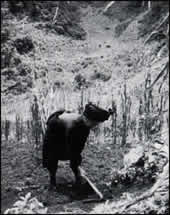
A Yao tribeswoman in the mountains of northern Laos,
preparing a hillside for opium planting in 1971.
General Vang Pao organised sabotage forays into China for the CIA and sold Burmese opium to another CIA protégé, General Phoumi Nosavan, political leader of the Laotian right-wing. The economic alliance between Phoumi and the Hmong opened up a new trading pattern that supplied increasingly significant quantities of Burmese opium for the flourishing Laotian heroin laboratories.
Phoumi had come to power in 1958 when an unexpected electoral victory by the Pathet Lao movement panicked the U.S. Fearing that Laos might eventually turn Communist, the CIA financed the formation of a right-wing coalition, while the State Department plunged the government into a fiscal crisis by cutting off all aid. Little more than three months after the elections, Prime Minister Souvanna Phouma and his neutralist government resigned. A new right-wing government took control, declaring: “We are anti-Communists.” The State Department provided funds of $3 million a month to the new government. Backed by the CIA, Phoumi became a cabinet minister and a general, and with his personal CIA agent always by his side, plotted coups, rigged elections and helped the CIA build up its Secret Army in Laos (see later).
In July 1962, the United States and the Soviet Union signed the Geneva Agreements on Laos, theoretically terminating their military operations in that chaotic region. Although American Green Berets and military advisers were withdrawn by October as specified, the CIA devised a number of deceptions to continue its covert activities. All of the CIA operatives moved to adjacent areas of Thailand but returned almost every day by helicopter or plane to direct guerrilla operations. Civilian personnel (not covered by the Geneva Agreements) were recruited for clandestine operations. In December 1962, for example, CIA agent Edgar Buell trained Hmong guerrillas in demolition techniques and directed the dynamiting of six bridges and twelve mountain passes near Ban Ban. The U.S. Embassy declared that Air America flights to Hmong villages, which carried armaments as well as refugee supplies, were “humanitarian aid” and as such were exempted from the Geneva Agreements.
The Agency’s paramilitary training programmes in Laos developed into a covert war of unprecedented scale against the Pathet Lao in the northeast of the country, while providing bases for bombing raids against North Vietnam on the northwestern border. The CIA recruited and trained a private army of over 30,000 Hmong and other Laotian tribesmen. This group was known as L’Armee Clandestine (Secret Army). 40 or 50 CIA officers ran this operation, later aided by 20,000 Thai mercenaries at a cost of some $300 million a year.
The CIA’s Secret Army went on the rampage throughout northern Laos, attacking Pathet Lao villages and expanding Hmong commando operations into bordering provinces. As each village was captured, the inhabitants were put to work building crude landing strips, usually 500 to 800 feet long, to receive Air America’s “refugee” supplies. These landing strips were then used by Air America to fly Hmong opium to markets in Long Tieng and Vientiane. Vang Pao’s CIA counterpart Tony Poe later revealed that Vang Pao flew heroin across southern Laos into central Vietnam, where “the number two guy to President Thieu would receive it.”
Hmong militia of the CIA’s Secret Army on patrol in northern Laos.
 George Cosgrove, organizer of the CIA’s Secret Army, directs Air America cargo
George Cosgrove, organizer of the CIA’s Secret Army, directs Air America cargo
planes parachuting supplies to Hmong soldiers in the mountains of northern Laos, 1971.
It was during this period that several key Agency players in the weapons supply network to the Nicaraguan Contras in the 1980s developed their skills in drug running and secret war management. CIA chief of station Ted Shackley exercised overall command over the Agency’s covert operations in Laos. (He later managed Operation Phoenix, the CIA’s mass murder “pacification” programme in Vietnam). Shackley’s CIA deputy in Laos, Tom Clines, managed ground support activities for the war, and U.S. Air Force liaison Richard Secord, then a lieutenant colonel, supplied most of the aircraft for Air America and other CIA proprietary airlines.
Shackley, Clines and Secord, together with Robert Jantzen, the CIA’s station chief in Thailand and CIA officer Edwin Wilson, were cited in the late 1970s in the Nugan Hand Bank scandal in Australia, which was found to be heavily involved in drug trafficking between Thailand and Australia, as well as money laundering and illegal weapons deals.
 CIA agent Theodore Shackley |
 CIA agent Thomas Clines |
Air logistics for the Laos opium trade were further improved in 1967 when the CIA and USAID gave Vang Pao financial assistance in forming his own private airline, Xieng Khouang Air Transport. This airline flew additional cargoes of opium and heroin between Long Tieng and Vientiane.
The CIA’s covert action assets were the leading heroin dealers in Laos: General Ouane Rattikone, commander-in-chief of the Royal Laotian Army (the only army in the world, except for the U.S. Army, that was entirely funded by the U.S. government) owned one heroin laboratory, while another Laotian heroin laboratory at Nam Keung was protected by Major Chao La, commander of Yao mercenary troops for the CIA in north-western Laos.
 Laos’ leading heroin manufacturer, General Ouane Rattikone (centre),
Laos’ leading heroin manufacturer, General Ouane Rattikone (centre),
being decorated by King Savang Vatthana on his retirement in June 1971.
The trademark for Double U-O heroin brand, manufactured at Rattikone’s Laos
laboratory for sale to U.S. troops serving in South Vietnam during the 1970s.
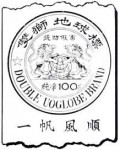 As the war against the Pathet Lao progressed, Hmong losses were enormous. Many Hmong villagers had to endure repeated and long forced marches, which produced fatalities of up to a third, and most of the Hmong lost their desire to continue fighting for Vang Pao. They resented his flamboyant excesses such as personally executing his own soldiers, stealing from the military payroll and his willingness to take heavy casualties.
As the war against the Pathet Lao progressed, Hmong losses were enormous. Many Hmong villagers had to endure repeated and long forced marches, which produced fatalities of up to a third, and most of the Hmong lost their desire to continue fighting for Vang Pao. They resented his flamboyant excesses such as personally executing his own soldiers, stealing from the military payroll and his willingness to take heavy casualties.
The more highly motivated Pathet Lao guerrillas finally took control of the country in May 1975, leading to the formation of the People’s Democratic Republic of Laos. Vang Pao fled to Thailand, from where he was escorted to Missoula, Montana – the hometown of his CIA case officer, Jerry Daniels. Here, Vang Pao paid over half a million dollars for a cattle ranch, hog farm and two large homes.
By the end of the year, over 30,000 Hmong refugees had fled across the border into Thailand, the first wave of a mass exodus that would peak at 3,000 a month by 1979. General Vang Pao’s comment was: “War is difficult, peace is hell.”
At the same time as it was launching sabotage and guerrilla attacks against the Communist North Vietnamese, the CIA sent Colonel Edward Lansdale to South Vietnam to help install the right-wing regime of Ngo Dinh Diem. This was one of the CIA’s most successful operations.
In late 1969, the Agency ‘s various covert action clients in Southeast Asia opened a network of heroin laboratories in the area, stretching from southern Yunnan Province in China to neighbouring Burma’s Shan States, northern Thailand and northern Laos. This region was commonly known as the “Golden Triangle” to opium and heroin traffickers, and the new laboratories began to export high-grade no. 4 heroin to U.S. troops fighting in Vietnam. Within two years, army medical officers estimated that 10 to 15%, or 25,000 to 37,000 of U.S. soldiers were regular heroin users.
At the same time, both the American Mafia and Marseilles’s Corsican syndicates were looking for new sources of heroin and morphine base and moved to Saigon when they saw that the Vietnam war had opened up a new market for them among American GIs. The CIA’s Senior Liaison Office, under the command of Edward Lansdale, worked closely with South Vietnamese Premier Nguyen Cao Ky’s administration during the war, and Ky was heavily involved in narcotics trafficking. One of Ky’s strongest supporters in the air force, Colonel Phan Phung Tien, was close to many Corsican gangsters and was implicated in the smuggling of drugs between Laos and Vietnam.
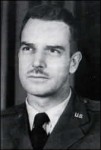 Colonel Edward 0. Lansdale, leading CIA operative during
Colonel Edward 0. Lansdale, leading CIA operative during
the Agency’s drug trafficking activities in Southeast Asia.
However, despite knowing that the Corsicans were heavily involved in the drugs traffic, Lansdale took no action against them but instead arranged a “truce” in which he agreed to turn a blind eye to their activities in order to avoid embarrassment to Premier Ky and the South Vietnamese government, which Washington was supporting in its war against the Communists in the North.
Even when the U.S. Army’s Criminal Investigation Division (CID) gathered detailed information on the South Vietnamese government’s involvement in trafficking heroin to American GIs, rather than acting on the information, the Nixon administration and the U.S. military command did their best to deny both the charges and the scale of the GI heroin epidemic, and to shield the South Vietnamese government from criticism.
South Vietnamese Prime Minister Ngo Dinhm Diem (left) meets
with General La Van Vien, Saigon’s leading opium trafficker.
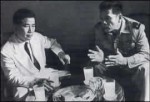 Before long, the U.S. military command in Vietnam was discharging between 1,000 and 2,000 GI addicts a month. They were flown back to the United States and discharged almost immediately. Virtually none of them were given any follow-up treatment; many returned to their hometowns as confirmed addicts and afflicted their communities with the heroin plague. A large percentage of these were white middle-class communities that had previously always been free from heroin addiction. In June 1971, one specialist noted: “Each addict makes at least four more. He cannot bear his habit alone and is sure to seek recruits, even if he is not himself the pusher. This is the emergency we now face.”
Before long, the U.S. military command in Vietnam was discharging between 1,000 and 2,000 GI addicts a month. They were flown back to the United States and discharged almost immediately. Virtually none of them were given any follow-up treatment; many returned to their hometowns as confirmed addicts and afflicted their communities with the heroin plague. A large percentage of these were white middle-class communities that had previously always been free from heroin addiction. In June 1971, one specialist noted: “Each addict makes at least four more. He cannot bear his habit alone and is sure to seek recruits, even if he is not himself the pusher. This is the emergency we now face.”
Many of the discharged GIs returned to Vietnam to set themselves up in the drugs trade, recruiting active-duty soldiers going home as couriers, and using local GIs to ship heroin to the U.S. through the army and air-force postal system. A vial of heroin in Vietnam cost only $2; back in the U.S. it sold for $100.
In a 1970 report, the U.S. Bureau of Narcotics concluded that Burma, Laos and Thailand together had become the source of more than half the world’s illicit supply of opium. There is little doubt that the ClA’s support for the traffickers in these countries was responsible for this massive growth in the drug trade. U.S. officials turned a blind eye to the region’s governments’ involvement in the opium traffic, while the CIA itself was actively involved, supplying modern aircraft to replace mules, naval vessels to replace sampans, and providing access to international transport for the opium traders and commercial contacts to facilitate the marketing of the drugs.
After the withdrawal of American troops from Vietnam in 1975, the Corsican and Chinese syndicates started shipping Laotian heroin directly to the United States, capturing one third of the American narcotics market. Heroin was following the GIs home.
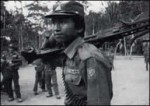 Shan state army soldier, a Burmese group active
Shan state army soldier, a Burmese group active
in the opium trade, at their camp in Man Pi.
Meanwhile, the heroin networks in Vietnam compensated for the loss of their American clientele by distributing drugs to the legions of unemployed youth, prostitutes and street dealers that comprised Saigon’s U.S. camp-generated economy. As South Vietnam fell into a crisis of government corruption and economic collapse, a report by the CIA’s Saigon station concluded: “If President Thieu continues to govern with the support of corrupt and incompetent men, it will be difficult for South Vietnam to win the struggle against the Communists.” Instead of pressing Thieu for reforms, the CIA station chief Thomas Polger suppressed the information.
By the time the North Vietnamese captured Saigon in March 1975, they found the city of four million included 300,000 unemployed, 150,000 heroin addicts and 130,000 prostitutes. Within months, the new Communist regime established the New Youth College, a residential drug centre with 1,200 beds and a yearlong treatment programme that established an 80% cure rate among the addicts.
In October 1977, a military coup in Thailand brought General Kriangsak Chamanan to power as prime minister. Kriangsak quickly abandoned the previous government’s anti-drugs policy, stating: “There appears to be a conflict between our campaign against narcotics and our campaign against the Communists”, and he helped to supply the CIA’s Kuomintang opium armies in northern Thailand with arms and money, in return for their drugs.
Seeking to show the American public that its allies were no longer active in the narcotics industry, the CIA arranged a public ceremony in March 1972, at which General Kriangsak arranged the burning of the KMT’s “last 26 tons of opium” for the U.S. government. Parading before U.S. television cameras, the KMT’s commander, General Li Wen-huan and his troops delivered a hundred mules laden with “opium” and publicly renounced the drug trade. The Thai military soaked the packs with petrol and set them on fire. With covert funding from the CIA, the Thai military paid the KMT general $1 850,000 for this act. The U.S. State Department proclaimed that “this quantity of opium, if refined into heroin, could have supplied half the U.S. market for one year.”
As it turned out, the opium pyre was neither the KMT’s last shipment, nor entirely opium at all. Only 5 of the 26 tons had been opium and the balance was fodder, plant matter and chemicals. Kriangsak and the Thai military command maintained the fiction that their troops had now retired from the opium trade, papering over General Li’s long-time links to the CIA, while Li continued with his narcotics activities as actively as ever.
 A tribeswoman collecting opium during the
A tribeswoman collecting opium during the
1898 harvest in the southern Shan states.
Opium warlords such as Khun Sa came to dominate the narcotics trade in Thailand in the 1980s. When the Thai government bowed to public pressure and launched a military assault on Khun Sa’s base at Ban Hin Taek near the Burmese border in January 1982, they found the site contained a hundred-bed hospital, a brothel, luxurious villas with swimming pools, a vacation house for General Kriangsak and seven heroin refineries. The Thai border patrol police had maintained an outpost only a mile from Khun Sa’s camp for the past four years but had never disturbed the nearby heroin laboratories. General Kriangsak was the minister responsible during this time.
Despite heavy casualties, Khun Sa’s forces retreated across the border into Burma, where he quickly re-established the heroin laboratories that allowed him to control 70% of Burma’s opium trade. Today Khun Sa, armed by the CIA, trained by the KMT and protected by the Burmese government, is probably the world’s most powerful drug lord. He commands an army of some 4,000 men armed with M16 rifles and .50 calibre machine guns. In one harvest he transports enough opium and heroin to supply the entire annual requirements of America’s illicit drug markets.
 Khun Sa, Burma’s leading opium warlord and heroin manufacturer, in
Khun Sa, Burma’s leading opium warlord and heroin manufacturer, in
his headquarters at Mongmai near the Thai border, February 1989.
THE AFGHAN CONNECTION
“You can say the Afghan rebels made their money off the sale of opium. There’s no doubt about it. The rebels keep their cause going through the sale of opium.
-DAVID MELOCIK, DEA Congressional Affairs Liaison
During the mid 1970s, the temporary success of some Drug Enforcement Agency (DEA) operations in Turkey, Thailand and Mexico reduced the heroin flow into the United States and cut the number of American addicts by more than a half. However, the CIA’s covert warfare operation in Afghanistan then transformed southern Asia from a self-contained opium zone into a major supplier of heroin for the world market.
When President Carter reacted to the Soviet invasion of Afghanistan in December 1979 by shipping arms to the mujahedin guerrillas, Dr. David Musto of the White House Strategy Council on Drug Abuse warned: “We were going into Afghanistan to support the opium growers in their rebellion against the Soviets. Shouldn’t we try to avoid what we had done in Laos? … Are we erring in befriending these tribes as we did in Laos, when Air America, chartered by the Central Intelligence Agency, helped transport crude opium from certain tribal areas? Shouldn’t we try to pay the growers if they will eradicate their opium production?”
As heroin from Afghanistan and Pakistan suddenly poured into America throughout 1979, Musto told the White House: “On the streets, this drug is more potent, cheaper and more available than at any time in the last twenty years,” and he warned: “This crisis is bound to worsen.” But Dr. Musto’s warnings fell on deaf ears .
The DEA confirmed Mustos’s worst fears with reports of a rash of cases involving the movement of Middle Eastern heroin: Philadelphia and Washington DC both reported an increase of 25% in overdose deaths during the year, and the nation’s addict population doubled in three years. And as supply surged, wholesale prices in Europe fell and purity rose to a new high. With ample supplies of opium and morphine, Marseilles’s Corsican syndicates were co-operating with the Sicilian Mafia to open a new network of heroin laboratories in Europe, which then exported heroin to the United States.
There was worse to come, as heroin exports from Afghanistan and Pakistan continued to increase. Afghanistan’s opium production leaped from about 100 tons in 1971 to 300 tons in 1982 and to 575 tons the following year. Street sales of narcotics in the United States rose by 22% in 1980, while cocaine supply jumped a remarkable 57% to 44 tons, worth $29 billion.
Then came crack cocaine, which reached pandemic proportions in America by the mid-1980s. World opium production tripled from an estimated 1,600 tons in 1982 to 4,700 in 1990. A DEA expert stated in June 1990: “It is the tip of the iceberg.”
How did this catastrophe occur? During the Nixon administration, the CIA, along with the Iranian secret police SAVAK, attempted to destabilise the Afghan government of Hafizullah Amin, which for decades had been allied with the Soviet Union. The CIA trained and armed a 5,000-strong army in Pansher valley, north of the capital Kabul. By December 1979, the encroaching threat of the CIA-backed forces and months of fighting between rival Communist factions meant that the collapse of the Afghan government seemed imminent. The Soviet Union sent troops into the country to support its ally, occupying Kabul and installing a more pliable Afghan Communist as president.
Jimmy Carter reacted with ill-concealed rage, denounced Soviet leader Leonid Brezhnev, imposed a series of economic sanctions against Moscow and mobilised covert military aid for the mujahedin guerrillas. Egypt, Pakistan and China all agreed to help, while Saudi Arabia contributed $25 million. Within weeks, massive arms shipments began – hand-held missiles and anti-tank weapons from China, Kalashnikov assault rifles from Egypt, munitions from Saudi Arabia and a variety of U.S. weapons from the CIA, including Stinger missiles. The CIA’s operation in Afghanistan was the second largest covert war in its 40-year history. Only its secret war in Laos was bigger and more expensive.
When the failure of the monsoon rains for two consecutive years reduced the Golden Triangle’s opium production to a record low in 1980, a network of heroin laboratories opened along the Afghan-Pakistan border to service the global markets opened by the drought in Southeast Asia. Pakistan’s opium production soared to 800 tons, dominating the European market. Pressured by the United States, an important ally, Pakistan’s military regime under General Zia ul-Haq imposed an erratic drug suppression effort that drove the country’s opium production down to its more normal level of 100-200 tons. Afghanistan’s mujahedin guerrillas correspondingly expanded production in their zones and shipped the raw opium to the Afghan-Pakistan border refineries for processing into heroin.
Soon after President Reagan took office in 1981, the White House offered a $3 billion programme of military aid to General Zia’s harsh Islamic fundamentalist dictatorship in Pakistan and Zia’s military quickly assumed a dominant role in supplying arms to the mujahedin. The CIA worked closely with Pakistan’s Inter Service Intelligence (ISI), which the Agency helped build into a powerful covert operations unit and the strong arm of Zia’s martial-law regime.
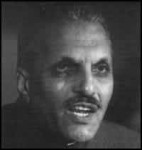 Pakistani dictator Zia ul-Haq, aided by the CIA in his narcotics trafficking.
Pakistani dictator Zia ul-Haq, aided by the CIA in his narcotics trafficking.
During the ten years of CIA support for the mujahedin resistance against the Soviet occupation of Afghanistan, the U.S. government was silent about the involvement in the heroin traffic of leading Afghan guerrillas and the Pakistan military. In particular, the CIA allied with Gulbuddin Hekmatyar, leader of the small mujahedin Hezbi-i Islami group, and over the next decade the Agency gave Hekmatyar more than half its covert aid, building the Hezbi-i Islami into the largest guerrilla force in the country. Hekmatyar also used the Agency’s arms, logistics and support to become the region’s largest drug lord. Within a year, the surge of his heroin production had captured over 60% of the American market, breaking the long drug drought and raising America’s addict population to its previous peak.
An Islamic militant, the brutal and corrupt Hekmatyar had founded the Muslim Brotherhood in the early 1970s, when his activities included dispatching followers to throw vials of acid into the faces of women students who refused to wear veils. Hekmatyar allied himself with Pakistan’s Jamaat-i Islami (Party of Islam), a fundamentalist and quasi-fascist Muslim group with many members inside the Pakistani officer corps.
 Afghan resistance leader Gulbuddin Hakmatyar (centre), chief
Afghan resistance leader Gulbuddin Hakmatyar (centre), chief
beneficiary of CIA arms and the country’s largest heroin trafficker.
With generous American aid of $3 billion officially (and a further $2 billion covertly for the military), Pakistan allowed the CIA to conduct its secret war in Afghanistan without restraint. Along the border, the Agency ran training camps for the mujahedin, and in Pakistan’s capital, Islamabad, the CIA maintained one of its largest foreign stations to direct the war. General Zia allowed the CIA to open an electronic intelligence station facing the Soviet Union in northern Pakistan and permitted U.S. spy flights over the Indian Ocean from his air bases near the Persian Gulf.
From the outset of the covert war in 1979, other mujahedin leaders complained that Hekmatyar’s Hezbi-i Islami followers were using violence to take control of rival resistance groups. Pakistan’s ISI gave Hekmatyar a free hand to rule the Afghan refugee camps around Peshawar and he used it to run a reign of terror.
As the mujahedin used their new CIA munitions to capture prime agricultural areas inside Afghanistan during the early 1980s, the guerrillas ordered their peasant supporters to grow poppies, thereby doubling the country’s opium harvest in a year. The mujahedin sold the opium to heroin refiners in Pakistan who operated under the protection of General Fazie Huq, governor of the North-West Frontier province, and an intimate of General Zia. Fazle Huq was to accumulate a powerful fortune from this, estimated at several billion dollars.
 Casualty of the Afghan war – a three-week-old
Casualty of the Afghan war – a three-week-old
baby whose right leg was severed by a shell.
By 1988, there were an estimated 100 to 200 heroin refineries in the province’s Khyber district alone. Pakistan Army trucks arriving with CIA arms from Karachi often returned loaded with heroin – protected from police search by ISI papers. Both European and Pakistani police were to later report that all investigations of the province’s major heroin syndicates “had been aborted at the highest level.” Further south, in Pakistan’s Baluchistan province, Hekmatyar himself controlled six heroin refineries that processed the large opium harvest from Afghanistan’s fertile Helmand valley.
The heroin boom under General Zia was so large and uncontrolled that drug abuse swept Pakistan in the early 1980s. The number of addicts went from a few hundred to more than 1.3 million within three years, one of the world’s largest addict populations. Instead of prospering with a bonanza of U.S. aid following the 1979 Soviet invasion, Pakistan was – and still is – destabilised by the immense drug and arms traffic. Throughout this, some 17 DEA agents sat in the U.S. embassy at Islamabad without making a major arrest or seizure – they recognised the potential embarrassment of exposing CIA operatives, even though they were major drug lords.
The blatant official corruption continued until August 1988 when General Zia’s death in an air crash brought an eventual restoration of civilian rule. The U.S. State Department paid tribute to Zia as “a strong supporter of anti-narcotics activities in Pakistan.”
By 1989, the CIA’s complicity in global narcotics traffic had allowed world opium production to multiply fourfold to 4,200 tons a year. Significantly, three quarters of this came from Southeast Asia where the Agency had worked with the region’s drug lords for 24 years. Most of the balance came from southern Asian opium hills and heroin laboratories controlled by the CIA’s Afghan guerrilla clients. Just as CIA support for KMT forces had increased Burma’s opium crops in the 1950s, so the Agency’s aid to the mujahedin guerrillas expanded opium production in Afghanistan and linked Pakistan’s nearby heroin laboratories to the world market.
After a decade as the sites of major CIA covert operations, Burma and Afghanistan ranked respectively the world’s largest and second largest suppliers of illicit heroin in 1989. Today, the “Golden Crescent”, as the opium growing regions in Afghanistan, Iran and Pakistan are called, accounts for 75% of all the heroin in Western Europe and 50% of the heroin in the U.S. A Reagan administration official bluntly stated in 1988: “We’re not going to let a little thing like drugs get in the way of the political situation. And when the Soviets leave and there’s no money in the country, it’s not going to be a priority to disrupt the drug trade.”
The withdrawal of Soviet troops from Afghanistan in February 1989 resulted in savage fighting between rival mujahedin commanders for the country’s prime opium land. When one of Hekmatyar’s commanders slaughtered thirty members of another mujahedin group, the atrocity inspired the president of the new Afghan interim government to denounce Hekmatyar, his own foreign minister, as “a criminal and a terrorist.”
The CIA continued to supply arms to Hekmatyar even after the Soviet withdrawal and the Agency’s operations turned the country into a breeding ground for terrorism. Some 20 training camps sprang up in eastern Afghanistan, mainly in areas under Hekmatyar’s Hezb-i-lslami control, teaching such skills as demolitions and assassinations. Many of the participants in the 1993 bombing of the World Trade Centre had combat experience with Hekmatyar’s troops. Ramzi Anmed Youssef, convicted in New York of plotting to blow up eleven U.S. airliners over the Pacific, bragged of receiving training in terrorist tactics from the Agency’s Afghan bases.
The infighting between the mujahedin over gaining control of the heroin-producing regions paved the way for the rise of the Taliban, a militant Islamic sect whose fanaticism makes the mujahedin appear almost progressive by comparison. Most of the Taliban came from Pashtun villages in the south of Afghanistan and many spent years in Madrassahs (religious schools) in the refugee camps of Pakistan being trained as mujahedin. Led by Mohammed Omar Akhund, the Taliban viewed the mujahedin as having betrayed their country by deviating from Islam. They even considered the regime in Iran (from the rival Shi’ite branch of Islam) as dangerously liberal and modernising.
From the outset, the CIA and Pakistan’s ISI developed close contacts with the Taliban. In May 1996, two senior Taliban leaders attended a conference in Washington run by Senator Hank Brown, while senior U.S. diplomats, including Robin Raphael, the Assistant Secretary of State for Asian affairs, regularly traveled to Taliban headquarters. ISI officers aided and flew Taliban planes in their raids on Kabul, which fell to the Taliban militias in September 1996. On that day, State Department spokesman Glyn Davies touted them as “the group that might finally bring stability to Afghanistan.”
John Holtzman, the CIA’s station chief in Pakistan, planned to visit Kabul a matter of days later, when the Clinton administration realised that an image of Washington embracing ultra fundamentalists could be a disaster with American female voters. The visit was postponed. Of the UN’s 185 members, Pakistan alone rushed to recognise the Taliban government. John Holtzman told reporters: “The Taliban can play a useful role in ending Afghanistan’s long civil war by providing a strong central government.”
 Well-armed Taliban fighters shortly after the capture of Kabul.
Well-armed Taliban fighters shortly after the capture of Kabul.
The ruined city of Kabul.
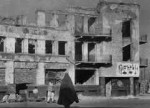 The strong central government that the Taliban provided was a virulent fundamentalism with no parallel in the world. People were forced at gunpoint to attend the mosque. Women were barred from education and from work. Men were ordered to grow beards. Television, music, sports and even kite-flying were banned. The Taliban snatched music cassettes from cars and smashed them with rocks by the roadside. Women caught exposing an inch of skin in public were beaten with baseball bats.
The strong central government that the Taliban provided was a virulent fundamentalism with no parallel in the world. People were forced at gunpoint to attend the mosque. Women were barred from education and from work. Men were ordered to grow beards. Television, music, sports and even kite-flying were banned. The Taliban snatched music cassettes from cars and smashed them with rocks by the roadside. Women caught exposing an inch of skin in public were beaten with baseball bats.
Washington’s motives in aiding the Taliban were, as ever, related to U.S. financial interests in the region. The U.S. firm Unocal and the Saudi group Delta Oil had reached an agreement with the former Soviet republic Turkmenistan for a multi-billion dollar natural gas pipeline which would go through Afghanistan into Pakistan. A friendly Taliban government would ensure the project’s feasibility and security – and also help prevent the creation of a similar pipeline proposed by Pakistan and Iran. Indeed, this may have been the largest single factor behind the U.S. government’s acceptance and continued funding of the Taliban, which has helped them achieve military success across the whole country.
U.S. officials claim that the Taliban will take a hard line on narcotics trafficking, yet to date the Taliban have done nothing to curtail the country’s lucrative opium trade, which brings in hard cash and foreign exchange. As fundamentalist Muslims, the Taliban theoretically oppose all forms of intoxication, including opium smoking, but in order to protect their support base they have refused to declare a ban on poppy cultivation and opium trafficking. In fact the UN estimated an increase in poppy cultivation and yield in the 1995-6 growing season -when the Taliban held 95% of the area under cultivation – compared to the previous year.
THE CENTRAL AMERICAN CONNECTION
“On the basis of this evidence, it is clear that individuals who provided support for the Contras were involved in drug trafficking, the supply network of the Contras was used by drug trafficking organisations and elements of the Contras themselves knowingly received financial and material assistance from drug traffickers.”
-SENATE FOREIGN RELATIONS SUBCOMMITTEE ON TERRORISM, NARCOTICS AND INTERNATIONAL OPERATIONS
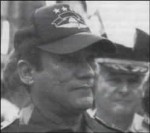 Panamanian dictator Manuel Noriega was supported by Reagan, Bush and the CIA, even though they knew he was heavily involved in cocaine trafficking.
Panamanian dictator Manuel Noriega was supported by Reagan, Bush and the CIA, even though they knew he was heavily involved in cocaine trafficking.
The Nicaraguan revolution in 1979 provided the focus of the CIA’s covert paramilitary operations in the region, which centred around an arms and drugs trafficking conspiracy involving Panama, Nicaragua, Honduras and Costa Rica.
Manuel Antonio Noriega’s relationship with the United States began in 1955 when, at the age of 19, he joined the Panama Socialist Party and began informing on its operations to U.S. intelligence. In 1962, Noriega joined the National Guard and was made chief of transit police by Major Omar Torrijos Herrera, who was on the payroll of the CIA. Torrijos was also working for the Agency in monitoring the potential threat of Communist influence among banana growers in Puerto Armuelles and Bocas del Toro. These plantations were owned by the United Fruit Company, a powerful American corporation that was also a CIA front.
In 1967, the CIA sent Noriega to study intelligence and counter-intelligence at Fort Gulick in Panama, followed by psychological operations at Fort Bragg in September 1967, and military intelligence training at the notorious School of Americas at Fort Benning in Georgia.
After the October 1968 coup which overthrew President Arnulfo Arias and brought Torrijos to power in Panama, Noriega was promoted to lieutenant colonel and made head of the country’s military intelligence (G-2), which he transformed into a sophisticated national spy service. In mid-1970, Noriega became a member of the Counterintelligence and Counterespionage Organisation, an international network of intelligence agencies.
Over the years, the CIA paid Noriega more than $11 million. The money was virtually unaccountable in the CIA’s budget. It was officially justified as “support for institutional co-operation” but in fact it was a slush fund turned over to Noriega to do with as he desired. Torrijos and Noriega commenced a lucrative covert arms network in Panama, with the blessing and support of the CIA. Factions involved in virtually every world conflict operated out of the country. Israel was chief amongst them, selling their arms first to Somoza, then to the Guatemalan military dictatorship and later to the Contras.
U.S. officials had hard evidence of Noriega’s extensive links to drug trafficking and human rights violations as early as 1971, yet every administration from Nixon’s onwards ignored the evidence and condoned his activities. Noriega was heavily involved in the tidal wave of Colombian cocaine sweeping into America. The Medellin drug cartel (a highly-organised consortium of Colombian cocaine brokers with an annual income estimated at $8 billion) paid Noriega vast sums of money for allowing them access to secure airstrips and aircraft in Panama, for making certain that customs and immigration officials asked no questions, for laundering drug profits through Panamanian banks, and for allowing wanted traffickers to remain in the country.
Washington’s desire to negotiate a new Panama Canal Treaty led to a long honeymoon between the U.S. and Panama. To a great extent, the vote in Congress on the Panama Canal Treaty was perceived as a referendum on drug dealing. A former Senate intelligence Committee member recalled from that period: “We had a very complete picture. We knew about the drug problem. And the Panamanians knew we knew it. Once we ratified the Treaty, the Panamanians got the word that the United States was open for the drug business.” Another U.S. official said at the time: “We had drugs – and Noriega – all over the place.”
On December 8th 1976, Noriega traveled to Washington D.C. where he first made the acquaintance of George Bush, the Director of the CIA. When Bush left this position the following year, he sent a letter to Noriega, thanking him for his assistance. Another contact between the two came when Bush became Vice President. Noriega sent a letter of congratulations and Bush sent a reply (dated December 23rd 1980) saying: “Thanks for the great congratulatory message,” and: “I hope our paths will cross again.”
Noriega thrived as never before under the Carter administration. He provided a haven in Panama for the Shah of Iran while Carter was seeking the release of the American hostages held in Iran, and when the Sandinistas took over Nicaragua in 1979, Noriega provided the CIA with the most regular and reliable intelligence about them. Torrijos too was involved in (futile) efforts to preserve Somoza’s National Guard as a counterbalance to total Sandinista control of the country.
If Carter needed Noriega as a friend in Panama to smooth the way to a Panama Canal Treaty, Reagan (who strongly opposed that treaty) needed him to support the anti-Sandinista cause. The destruction of the Nicaraguan government became the highest priority of Washington. The original plan to launch the covert war against the Nicaraguan government was drafted by George Bush’s long-time friend, former CIA officer Donald Gregg.
Gregg oversaw the operation through his trusted friend Felix Rodriguez (alias Max Gomez), an anti-Communist Cuban-American CIA operative and a former CIA security adviser to Bolivia (In 1967 Rodriguez was the head of the CIA-backed Bolivian troops who captured and killed Che Guevara, the Cuban revolutionary leader).
President Reagan with his National Security advisers in the White House Situation Room, 1985.
Left to right: Secretary of Defence Caspar Weinberger, Vice President George Bush,
the President, Secretary of State George Shultz, CIA Director William Casey and White
House Chief of Staff Donald Regan.
The official $4.6 million budget from the National Security Council for the anti-Sandinista operation was supplemented by another $25 million from the Pentagon and CIA; much of that went to a secret organisation presided over by George Bush, named the Crisis Management Centre, which was staffed by a platoon of military special operations officers. George Bush’s office was the central command post for the whole operation.
CIA Director William Casey found a way to take action against the Sandinistas with the help of the Argentineans. The CIA had extremely close relations with the fascist junta generals who ruled Argentina (the Agency had helped set up the country’s military intelligence). Argentina began training about a thousand men, mostly former Somozan National Guards, into an anti-Sandinista paramilitary army, north of the Nicaraguan border in Honduras. These were the forces who would become known as the Contras.
Argentina appointed its military intelligence chief as ambassador to Panama to co-ordinate the operation. Argentine military intelligence officials were also assigned to Miami to organise training camps for Contra guerrillas, in particular the far-right Alpha 66 and Omega 7. In each of the countries where they set up training units for the Contras, the Argentine advisers encouraged the use of violence and political assassinations.
Leonardo Sanchez Reisse, a leading member of the Argentine intelligence unit known as Battalion 61, was put in charge of financing the Florida forces and “buying special equipment that could not be acquired through normal channels.” Reisse recruited, amongst others, two key anti-Communist Cubans into the Argentine training apparatus: Jose Suarez, who became a hit man for the Colombian cocaine Mafia, and Felix Rodriguez.
Meanwhile the overthrow of Honduran President Melgar in a “cocaine coup” in 1978, which brought General Paz Garcia to power, paved the way for an alliance of the military, the drug lords and the CIA to support the Contras from bases in Honduras. The key financier behind the coup was Juan Ramon Matta Ballesteros, known as “chief of the Honduran Mafia.”
Jimmy Carter’s administration chose to overlook its knowledge of Matta’s major role in human rights abuses and the importation of half a billion dollars’ worth of cocaine into the United States each year because he supported the struggle against the Sandinistas. U.S. economic assistance to Honduras tripled from 1978 to 1980, making it the largest recipient of American foreign aid in Central America. In March 1980, President Carter even hosted General Paz at the White House.
The CIA relied totally on the cocaine-trafficking military of Honduras to back its plans to overthrow the Sandinistas. For the following three years, Matta and Paz worked hand in hand with the army to build Honduras up as an even larger cocaine trafficking centre.
intelligence and move arms, you deal with drug movers.”
– GENERAL PAUL F. GORMAN summing up the rationale for
the CIA’s choice of alliances in Central America.
and the drug running blurred together and the war eventually became a business.
I ended up running drugs on behalf of the U.S. government. Period.”
– ROBERT PLUMLEE, Contra re-supply pilot
 |
 |
| With the help of the CIA, Contra forces dealt drugs and used the profits to enrich themselves and to buy arms. |
In the wake of revelations of massacres and other atrocities carried out by the Contras against Nicaraguan civilians, the U.S. Congress passed the Boland Amendment in December 1982, which officially prohibited the CIA from engaging in actions to overthrow the Nicaraguan government. Thus, the use of covert drug money to help the Contras’ funding problems took on an even greater appeal to the United States. This was in complete contradiction to President Reagan’s much-vaunted anti-drug posturing for the American public’s benefit.
By this time, CIA payments to Manuel Noriega had risen to $200,000 a year. Noriega contributed $100,000 to Contra leaders based in Costa Rica, set up a front to establish an airfield in Costa Rica for supplying the Contras and supplied pilots to smuggle weapons to the Contras. The Panamanian air cargo company Aviones de Panama, run by three of Noriega’s personal pilots, Cesar Rodriguez, Floyd Carton and Enrique Pretelt, flew weapons from Panama to bases in Costa Rica for Contra operations on the Southern Front. They dropped off the guns at Costa Rica, refueled, and flew on to U.S. bases in South Florida, loaded with cocaine and under the protection of the CIA.
Noriega also helped train Contra units in Panama, and tried, at the CIA’s urging, to persuade Southern Front Contra leader Eden Pastora to unite with the FDN Contras, the main Contra force which was owned and operated by the CIA.
DEA attaché Thomas Telles met with Noriega to arrange Panama’s assistance in large scale undercover money-laundering front operations to disguise the financing of the Contras. Panama, a tax haven with one of the Western Hemisphere’s tightest bank secrecy laws, was a favoured spot to stash illicit drug profits.


